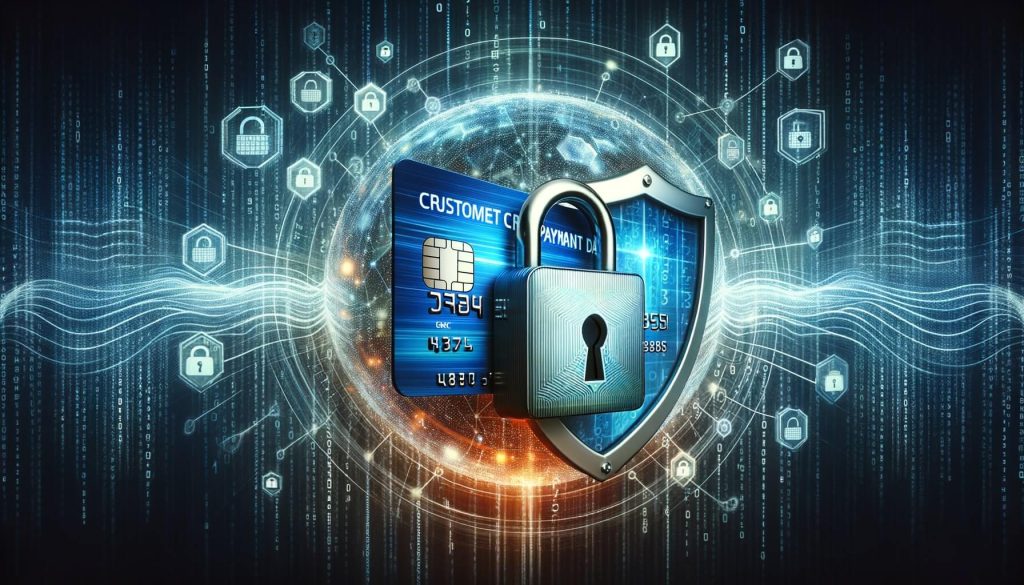
By dev February 5, 2025
In today’s digital age, payment processing has become an integral part of running a successful fitness center. Whether it’s collecting membership fees, processing class registrations, or managing recurring payments, fitness centers rely heavily on efficient and secure payment systems.
However, the payment landscape for fitness centers is not without its challenges. From choosing the right payment gateway to protecting customer payment data, fitness centers face a range of obstacles that can impact their bottom line. In this article, we will explore the top payment challenges faced by fitness centers and provide a comprehensive guide to overcoming them.
Payment Processing: The Key Challenges Faced by Fitness Centers

1. Limited Payment Options: One of the primary challenges faced by fitness centers is offering a variety of payment options to their customers. While traditional methods like cash and checks are still prevalent, many customers prefer the convenience of digital payments. Fitness centers need to adapt to this changing landscape by accepting credit and debit cards, mobile payments, and online payment platforms.
2. High Transaction Fees: Another challenge for fitness centers is the high transaction fees associated with payment processing. These fees can eat into the center’s revenue, especially for smaller businesses with tight profit margins. It is crucial for fitness centers to carefully evaluate different payment gateway providers and negotiate competitive rates to minimize these costs.
3. Complex Pricing Structures: Fitness centers often have complex pricing structures, with different membership tiers, class packages, and add-ons. Managing these pricing structures and ensuring accurate billing can be a challenge for payment processing systems. Fitness centers need a payment solution that can handle these complexities and provide accurate and transparent billing to their customers.
4. Manual Payment Processing: Many fitness centers still rely on manual payment processing, which can be time-consuming and prone to errors. Manually entering payment information increases the risk of data entry mistakes and can lead to delayed or incorrect payments. Fitness centers should consider automating their payment processes to streamline operations and reduce the risk of errors.
5. Inefficient Payment Reconciliation: Reconciling payments can be a tedious and time-consuming task for fitness centers. Matching payments received with the corresponding invoices and tracking down discrepancies can be a challenge, especially for centers with a high volume of transactions. Implementing a payment system that offers robust reconciliation features can help streamline this process and save valuable time and resources.
Choosing the Right Payment Gateway: Factors to Consider

When it comes to choosing the right payment gateway for a fitness center, several factors need to be considered. Here are some key considerations:
1. Integration with Management Software: Fitness centers often use management software to handle various aspects of their operations, such as class scheduling, membership management, and reporting. It is essential to choose a payment gateway that seamlessly integrates with the center’s management software to ensure smooth and efficient operations.
2. Security and Compliance: Protecting customer payment data is of utmost importance for fitness centers. When selecting a payment gateway, it is crucial to ensure that it complies with industry security standards, such as PCI DSS (Payment Card Industry Data Security Standard). Look for a payment gateway that offers robust encryption, tokenization, and fraud prevention measures to safeguard sensitive customer information.
3. Payment Options: Consider the payment options that the payment gateway supports. Ideally, the gateway should allow customers to pay using credit and debit cards, mobile payments, and popular online payment platforms like PayPal. Offering a variety of payment options can enhance customer convenience and satisfaction.
4. Transaction Fees: Compare the transaction fees charged by different payment gateway providers. Look for transparent pricing structures and negotiate competitive rates to minimize costs. Consider the volume of transactions your fitness center processes and choose a payment gateway that offers cost-effective solutions for your specific needs.
5. Customer Support: Reliable customer support is crucial when it comes to payment processing. In case of any issues or technical difficulties, prompt and knowledgeable support can make a significant difference. Look for a payment gateway provider that offers 24/7 customer support and has a reputation for excellent service.
Security Concerns: Protecting Customer Payment Data

Security is a top concern for fitness centers when it comes to payment processing. Protecting customer payment data is not only essential for maintaining customer trust but also for complying with legal and industry regulations. Here are some key security measures that fitness centers should consider:
1. PCI DSS Compliance: Ensure that the payment gateway you choose is PCI DSS compliant. PCI DSS is a set of security standards established by major credit card companies to protect cardholder data. Compliance with these standards ensures that your fitness center is following best practices for data security.
2. Encryption and Tokenization: Look for a payment gateway that offers robust encryption and tokenization features. Encryption ensures that sensitive payment data is securely transmitted, while tokenization replaces cardholder data with unique tokens, reducing the risk of data breaches.
3. Fraud Prevention: Choose a payment gateway that incorporates advanced fraud prevention measures. Look for features like address verification, CVV verification, and velocity checks to detect and prevent fraudulent transactions. Additionally, consider implementing 3D Secure authentication, which adds an extra layer of security for online payments.
4. Regular Security Audits: Regularly assess the security of your payment systems through third-party security audits. These audits can help identify vulnerabilities and ensure that your fitness center’s payment processing infrastructure is up to date with the latest security standards.
5. Employee Training: Educate your staff about the importance of data security and train them on best practices for handling customer payment data. Implement strict access controls and regularly review and update employee access privileges to minimize the risk of internal data breaches.
Recurring Payments: Managing Subscriptions and Memberships

Many fitness centers offer subscription-based memberships or class packages that require recurring payments. Managing these recurring payments efficiently can be a challenge. Here are some tips for effectively managing subscriptions and memberships:
1. Automated Billing: Implement an automated billing system that can handle recurring payments seamlessly. This eliminates the need for manual invoicing and reduces the risk of errors. Look for a payment gateway that offers robust recurring billing features, such as automated payment reminders and the ability to set up recurring payment schedules.
2. Flexible Payment Options: Offer flexible payment options for recurring payments. Allow customers to choose between different payment methods, such as credit cards, direct debit, or online payment platforms. This enhances customer convenience and increases the likelihood of timely payments.
3. Membership Management Software Integration: Integrate your payment gateway with your membership management software. This allows for seamless synchronization of membership data and payment information, ensuring accurate billing and reducing administrative overhead.
4. Grace Periods and Late Fees: Establish clear policies regarding grace periods for missed payments and late fees. Communicate these policies to your customers upfront and enforce them consistently. This helps incentivize timely payments and reduces the risk of revenue loss due to missed or delayed payments.
5. Customer Communication: Regularly communicate with your customers regarding upcoming payments, changes in membership plans, or any other relevant information. Send automated payment reminders and notifications to ensure that customers are aware of their payment obligations and can update their payment information if necessary.
Mobile Payments: Embracing Convenience and Accessibility
With the increasing popularity of smartphones and mobile apps, mobile payments have become a preferred method of payment for many customers. Fitness centers need to embrace mobile payments to enhance convenience and accessibility. Here’s how fitness centers can leverage mobile payments:
1. Mobile Payment Apps: Offer mobile payment apps that allow customers to make payments directly from their smartphones. These apps should be user-friendly, secure, and integrate seamlessly with your payment gateway. Consider partnering with popular mobile payment platforms like Apple Pay or Google Pay to provide a wide range of options to your customers.
2. QR Code Payments: Implement QR code payments for class registrations or other services. Customers can simply scan a QR code displayed at the fitness center to make a payment using their mobile payment app. This eliminates the need for physical cards or cash and provides a contactless payment option.
3. Mobile Wallet Integration: Integrate your payment gateway with popular mobile wallets like Apple Wallet or Google Wallet. This allows customers to store their payment information securely on their smartphones and make payments with just a few taps.
4. In-App Purchases: If your fitness center has a mobile app, consider integrating in-app purchases. This allows customers to make payments directly within the app, whether it’s for class registrations, merchandise purchases, or membership renewals. In-app purchases provide a seamless and convenient payment experience for your customers.
5. Mobile Payment Security: Ensure that your mobile payment solutions are secure and protect customer payment data. Implement strong encryption, tokenization, and fraud prevention measures to safeguard sensitive information. Regularly update your mobile payment apps to address any security vulnerabilities and stay ahead of emerging threats.
Integrating Payment Systems with Management Software
Integrating payment systems with management software is crucial for streamlining operations and ensuring accurate billing and reporting. Here are some key considerations for integrating payment systems with management software:
1. Compatibility: Ensure that your payment gateway is compatible with your management software. Check if the software provider offers built-in integration options or if you need to use third-party plugins or APIs to connect the systems. Compatibility ensures seamless data synchronization and reduces the risk of errors or discrepancies.
2. Real-Time Data Sync: Choose a payment gateway that offers real-time data synchronization with your management software. This allows for immediate updates to membership information, class registrations, and payment data. Real-time data sync ensures accurate reporting and minimizes administrative overhead.
3. Reporting and Analytics: Look for a payment gateway that provides comprehensive reporting and analytics features. This allows you to track revenue, monitor payment trends, and gain insights into customer behavior. Integration with your management software ensures that all relevant data is consolidated in one place for easy analysis.
4. Automated Invoicing: Automate the generation and sending of invoices through your management software. This eliminates the need for manual invoicing and reduces the risk of errors. Choose a payment gateway that seamlessly integrates with your software to automate the billing process.
5. Customer Data Management: Ensure that customer data is securely stored and managed within your management software. Integration with your payment gateway should allow for easy access to customer payment history, billing information, and any other relevant data. This enables personalized customer service and targeted marketing efforts.
Chargebacks and Disputes: Minimizing Financial Losses
Chargebacks and payment disputes can be a significant financial burden for fitness centers. Chargebacks occur when a customer disputes a charge and requests a refund from their bank or credit card issuer. Here are some strategies to minimize financial losses due to chargebacks and disputes:
1. Clear Refund and Cancellation Policies: Establish clear refund and cancellation policies and communicate them to your customers upfront. Make sure these policies are easily accessible on your website, in membership agreements, and on receipts. Clear policies help manage customer expectations and reduce the likelihood of chargebacks.
2. Excellent Customer Service: Provide excellent customer service to address any issues or concerns promptly. Responding to customer inquiries and resolving disputes in a timely and satisfactory manner can prevent chargebacks. Train your staff to handle customer complaints effectively and empower them to make decisions that prioritize customer satisfaction.
3. Dispute Resolution Process: Implement a clear and efficient dispute resolution process. Train your staff on how to handle chargebacks and payment disputes, including gathering evidence, communicating with customers, and submitting compelling responses to the card issuer. A well-documented dispute resolution process can increase your chances of successfully challenging chargebacks.
4. Fraud Prevention Measures: Implement robust fraud prevention measures to minimize the risk of fraudulent chargebacks. Use address verification, CVV verification, and other fraud detection tools to identify potentially fraudulent transactions. Regularly review and update your fraud prevention strategies to stay ahead of emerging threats.
5. Chargeback Monitoring and Reporting: Monitor chargeback rates and analyze the reasons behind chargebacks. Look for patterns or recurring issues that may indicate areas for improvement in your operations or customer service. Use chargeback reporting tools provided by your payment gateway to gain insights into chargeback trends and take proactive measures to minimize future losses.
International Payments: Expanding Reach and Serving Global Customers
As fitness centers expand their reach and serve customers from around the world, accepting international payments becomes essential. However, international payments come with their own set of challenges. Here’s how fitness centers can navigate international payments:
1. Currency Conversion: Consider offering currency conversion options for international payments. This allows customers to pay in their local currency, enhancing convenience and transparency. Choose a payment gateway that supports multiple currencies and offers competitive exchange rates.
2. International Payment Methods: Research the preferred payment methods in the countries you serve. While credit and debit cards are widely accepted, some regions may have specific payment preferences, such as digital wallets or bank transfers. Adapt your payment options to cater to the preferences of your international customers.
3. Compliance with Local Regulations: Ensure that your payment processing complies with local regulations in the countries you operate in. Familiarize yourself with any specific requirements or restrictions related to international payments, such as data privacy laws or cross-border transaction limits.
4. Fraud Prevention for International Payments: Implement robust fraud prevention measures specifically tailored for international payments. International transactions carry a higher risk of fraud, so it is crucial to have additional security measures in place. Consider using geolocation tools, IP address verification, and other fraud detection techniques to minimize the risk of fraudulent international transactions.
5. Customer Support for International Customers: Provide dedicated customer support for your international customers. This can include multilingual support, extended support hours to accommodate different time zones, and clear communication channels for international inquiries or issues. Excellent customer support helps build trust and loyalty among your international clientele.
FAQs
Q1. What are the most common payment options for fitness centers?
A1. The most common payment options for fitness centers include cash, checks, credit and debit cards, mobile payments, and online payment platforms like PayPal.
Q2. How can fitness centers minimize transaction fees?
A2. Fitness centers can minimize transaction fees by carefully evaluating different payment gateway providers and negotiating competitive rates. It is also important to consider the volume of transactions and choose a payment gateway that offers cost-effective solutions for specific needs.
Q3. How can fitness centers protect customer payment data?
A3. Fitness centers can protect customer payment data by ensuring that their payment gateway is PCI DSS compliant, implementing encryption and tokenization, and incorporating robust fraud prevention measures. Regular security audits and employee training are also essential.
Q4. What are the benefits of mobile payments for fitness centers?
A4. Mobile payments offer convenience and accessibility for customers, allowing them to make payments directly from their smartphones. Mobile payments also provide a contactless payment option, which is particularly relevant in today’s health-conscious environment.
Q5. How can fitness centers minimize chargebacks and disputes?
A5. Fitness centers can minimize chargebacks and disputes by having clear refund policies, providing prompt customer support, maintaining documentation and evidence, establishing a dispute resolution process, and monitoring chargeback rates closely.
Conclusion
Payment processing poses unique challenges for fitness centers, from accommodating diverse payment options to managing subscriptions and protecting customer payment data.
By choosing the right payment gateway, prioritizing security, embracing mobile payments, and implementing strategies to minimize chargebacks and disputes, fitness centers can overcome these challenges and provide a seamless payment experience for their members.
By staying up-to-date with the latest payment trends and technologies, fitness centers can ensure that they are well-equipped to meet the evolving needs and preferences of their members in the digital age.